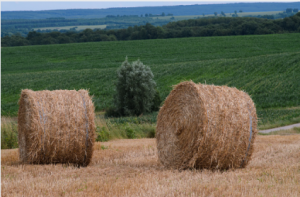If you’ve ever worked with fibre, you’ve likely seen baling twine. This small, diameter twine is used to bind fibrous material. Its tensile strength is 95 to 325 psi and is usually sisal. While baling twine may look like rope, it’s a synthetic material. So if you’re wondering what makes it so strong, read on to learn more about its use.
 Baler twine comes in many forms. It can be braided or cross-strand. It wraps around the feed sack and hay to create a bundle. Different types are available and come in different thicknesses. You can find them in various colours, patterns, and sizes. They can be lightweight and can be used in some applications. These twines come in various materials and can be easily replaced if your baling needs change.
Baler twine comes in many forms. It can be braided or cross-strand. It wraps around the feed sack and hay to create a bundle. Different types are available and come in different thicknesses. You can find them in various colours, patterns, and sizes. They can be lightweight and can be used in some applications. These twines come in various materials and can be easily replaced if your baling needs change.
While sisal is the traditional choice for baling hay, many farmers now choose polypropylene. Its high-tenacity properties make it a good choice for larger bales. It also stands up well to the elements. Some manufacturers even dye their twines to match the colour of the hay, which is ideal for the outdoors. If you’re interested in learning more about baler twine, check out the following article.
Twine has some advantages. The most obvious is its durability. It doesn’t rust, and it can be reused again. Another benefit is that it’s biodegradable, which means it won’t cause any damage to the environment. You won’t have to worry about dumping the baler twine into a landfill. A proper setup of the baler will also help you avoid problems later.
Baling twine is available in different colours. The most durable colour is black, but many other colours are also available. It’s important to choose the right twine for your specific machine. In addition, you’ll need to consider whether it is UV stabilized and how it can be easily marked.
Finally, it’s important to remember that the size of the baling twine is related to the size of the bale.
Baling twine is made from various materials, including nylon, twill, and coir. These are important for the baler because they ensure that the baling twine is resistant to moisture and dust.
Additionally, they make the hay more nutritious by preventing moisture absorption and dust from reaching the hay. It also helps the hay to grow into fresh fodder. These are benefits to choosing the right type of twine for your needs.
Baler twine comes in a variety of weights and colours. The best option for your square bales is a baling twine with slit-film 110-pound weight. It is also slit-film, so you can save money by purchasing a larger roll of baling twine than you might need. The best baling twine should be a combination of slit-film and polypropylene.
If you are looking for twine for your baler, choosing the right material is important. The best baling twine is made from natural, organic materials. It is easy to spin and low-stretch. It is also biodegradable, making it an excellent choice for round baling. Aside from being environmentally friendly, polypropylene twine is also more economical than sisal. In addition, they have the same breaking strength, so you’ll save money on both.
The twine for a square baler is biodegradable and comes in natural colours. However, if you’re considering a plastic twine for your baler, you’ll want to make sure that it is made from natural fibre. This kind of twine is a more expensive choice, but its strength makes it more sustainable than its natural counterpart. If you’re concerned about the environmental impact, this type of baler twine is biodegradable and can be recycled.